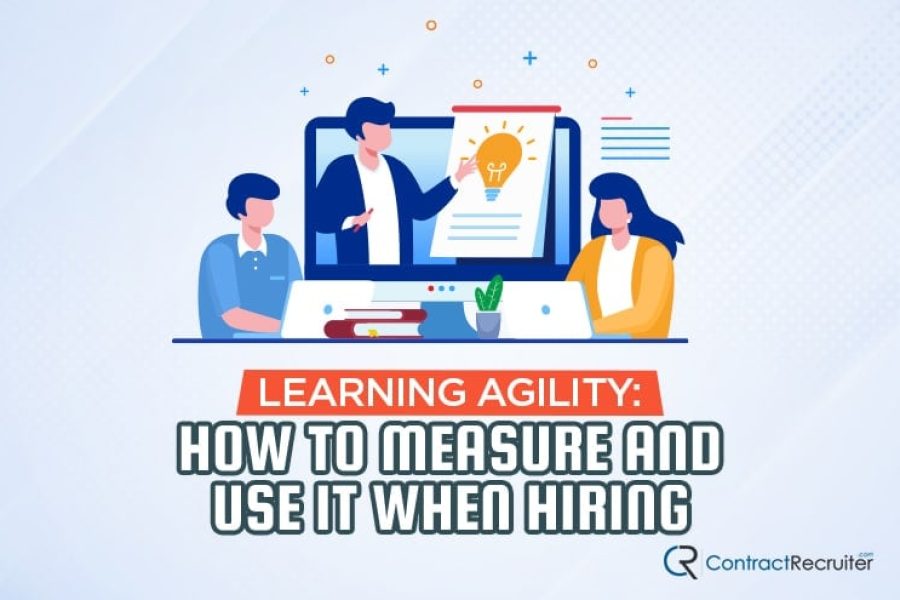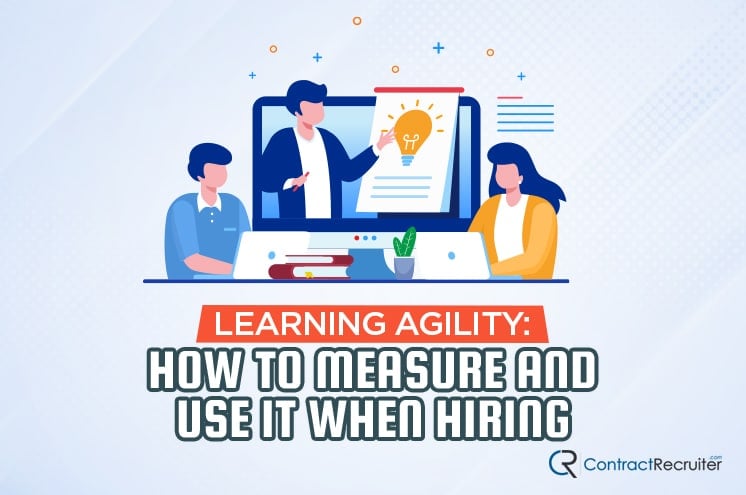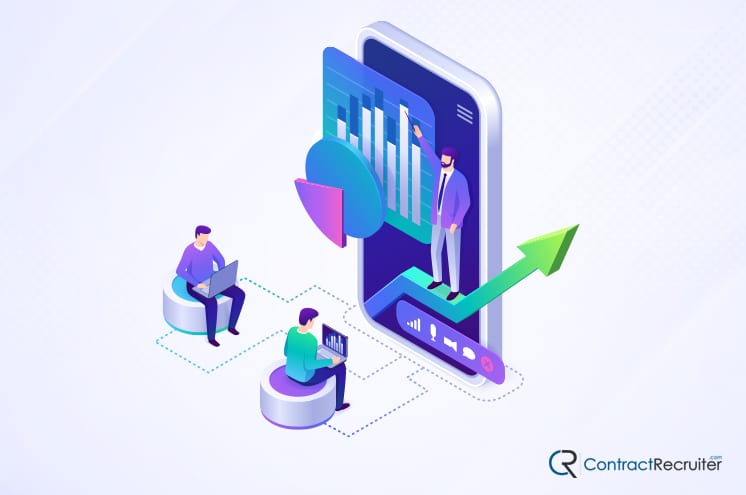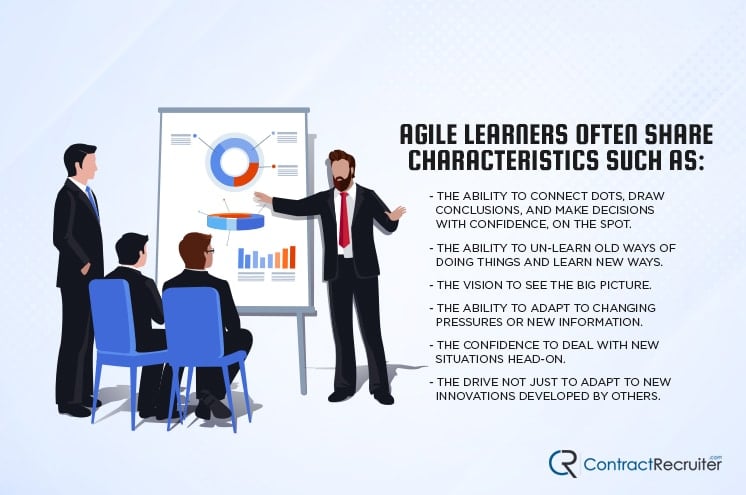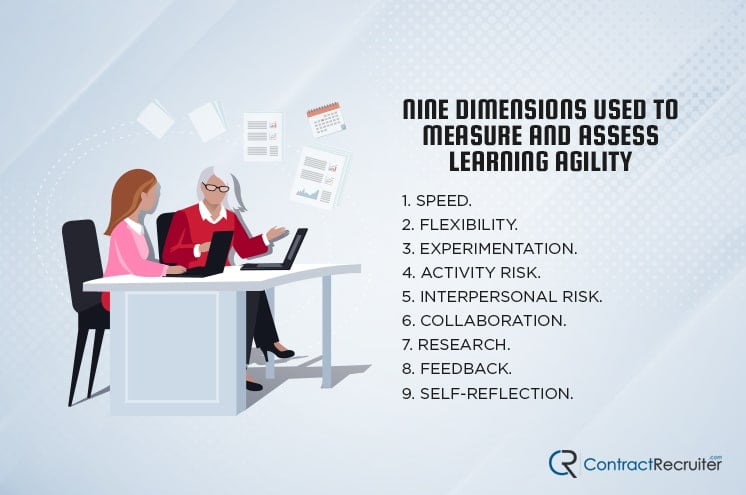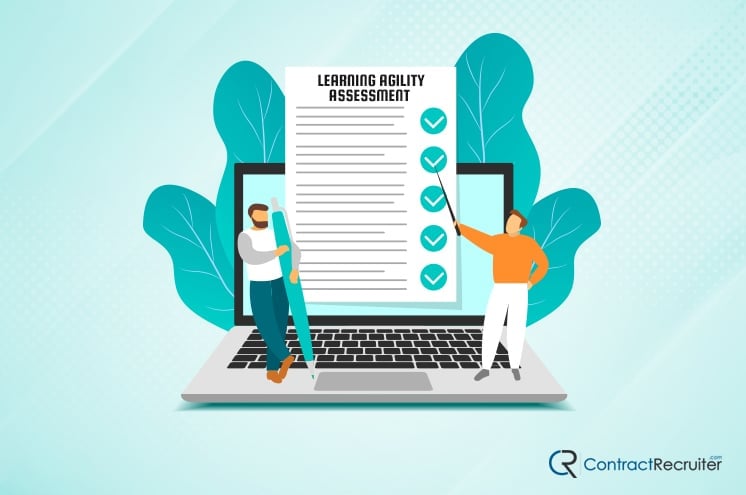When hiring a new candidate for a role in your business, what is the most important thing you should look for?
Is it their skills? Their experience? Their personality and ability to mesh with the existing company culture?
For many HR managers, one thing stands out. The candidate’s ability to adapt to new situations and learn new skills. This concept separates people who languish in their roles from people who pursue greater opportunities, who learn and grow over time.
It’s called Learning Agility. The trouble is, how do you define it, how can you measure it, and how can you use it as part of your hiring process?
Defining Learning Agility
Learning agility is the ability of an individual to learn, adapt, and change according to the pressures of a situation.
“In a nutshell, learning agility is a set of complex skills that enable us to learn something new in one place and then apply what we learned elsewhere, in a wholly different situation. Learning agility is our ability to learn, adapt, unlearn, and relearn to keep up with constantly changing conditions.” – Harver.
As we all know, businesses don’t remain static. The requirements of a job, the tools used to perform it, the people you interact with; these all change from week to week, month to month, or year to year. People who get stuck in “the way we’ve always done it” tend to develop from a core of institutional knowledge into a roadblock to progress, all because of their inability to change.
The best companies out there are the ones that can adapt to change. The company itself, and its leadership, are capable of changing according to outside pressures. They can only do this when the people they hire are, themselves, capable of adapting to change. Thus, one of the best long-term investments you can make in your workforce is emphasizing learning agility.
“Columbia University and the Center for Creative Leadership defined learning agility as ‘A mindset and corresponding collection of practices that allow leaders to continually develop, grow and utilize new strategies that will equip them for the increasingly complex problems they face in their organizations.'” – AIHR.
You’ve heard the metaphor before: “When all you have is a hammer, every problem looks like a nail.” Learning agility is how you surpass this problem. Moreover, learning agility is not just about finding a screwdriver to deal with a screw instead of a hammer; it’s about learning about new developments in screw design, different types of screws to use for different purposes, and different kinds of drivers with different features for different situations.
Learning agility isn’t just about recognizing when you don’t know something and learning it; it’s about unlearning what you think is best and learning a new best practice, or about self-examining what you think you do know to verify whether or not it’s something you should know better.
Why Learning Agility Matters for Business
We’ve all experienced cases where a business refuses to adapt to the times. Despite the clear benefits of a newer method, they might stick with an old-fashioned and out-of-date way of performing a task. Consider businesses that, today, still refuse to get a website, refuse to use an Applicant Tracking System, or refuse to adapt to skills being taught in schools for new hires.
“According to Korn Ferry, learning agility is a top predictor of high potential and long-term success, and companies with the greatest rates of high learning agile executives produce 25% higher profit margins than their peers.” – AIHR.
Consider the case of COVID-19 and how businesses have needed to adapt to the pressures of a global pandemic. Consider how some companies were able to seamlessly transition to primarily or entirely remote staffing in a matter of days, while others took months of dragging their feet before the barest minimum implementation, and others resisted every step of the way and never made the change.
Consider, too, how there are many tangible, measurable benefits to working remotely. Yet, despite experiencing those benefits first-hand, many companies are keen to push for a return to office work. What pressures lead to this? Often, it’s the inability of leadership or management to adapt; a lack of learning agility in the decision-makers responsible. It’s no coincidence that turnover is skyrocketed amongst the agile learners in the workforce when their employers refuse to adapt.
Make no mistake: any change requires learning. New skills, new tools, new means of communication; it’s all essential to a significant shift like a change to remote work. Some people take to it quickly. Others grew up using it. Some resist it every step of the way. Guess which ones are the ones most likely to fail in a new environment?
The case of Kodak is an example of a lack of agility ruining a company. Kodak was the #1 player in film cameras, with over 145,000 employees at its peak. Today, it’s a much smaller company with a tiny fraction of its former market share and under 5,000 employees.
Kodak invented the digital camera years before it caught on, but rather than invest in new and exciting technology, they shelved it out of fear that it would crush their core business model. Well, crush that model it did, but rather than being on the forefront of innovation, they resisted it every step of the way and brought about their downfall because of it.
We live in a world where technological development has increased at an unheard-of pace. Consider that humanity spent hundreds of thousands of years with virtually no technological development. Then, we went from harnessing electricity to landing on the moon to developing machine learning algorithms in under 200 years. The world of business, technology, and commerce is absolutely unlike anything it has been even a decade ago and will continue to change at an accelerating pace until the laws of physics get in the way.
Looking for Agile Learners
As part of your hiring process, you want to hire agile learners, but how can you identify them? First, it helps to know what characteristics to look for.
Agile learners often share characteristics such as:
- The ability to connect dots, draw conclusions, and make decisions with confidence, on the spot, without needing to dial back for extensive research or data harvesting.
- The ability to un-learn old ways of doing things and learn new ones, adjusting to the rapid pace of development in business.
- The vision to see the big picture and how a decision can have repercussions beyond the immediate fallout.
- The ability to adapt to changing pressures or new information, particularly when that information recontextualizes a decision or shows how a choice is incorrect.
- The confidence to deal with new situations head-on, rather than shy away from the unexpected.
- The drive not just to adapt to innovations developed by others, but to spearhead innovation themselves.
These characteristics are formalized in the Burke Learning Agility Inventory, a set of nine dimensions used to measure and assess learning agility. Burke is one of several options for evaluating learning agility, but it is one of the most popular and well-recognized.
The dimensions defined in it are:
- Speed. Speed is the ability to act quickly, discard ideas that aren’t working, and adopt new possibilities, accelerating your ability to pivot and adjust to newly-obtained information.
- Flexibility. Flexibility is a measurement of the ability to be open to new ideas and synthesize information into new proposals.
- Experimentation. Experimentation is the inherent or learned desire to try new things and see how they work, rather than a hesitation to try something new for fear of failure.
- Activity Risk. Activity risk is the drive to seek new ideas and try new things, taking calculated risks. Agile learners don’t shy away from risk, but neither do they take uninformed risks for no reason.
- Interpersonal Risk. Interpersonal risk is the personal ability to admit to being wrong, to learn, adjust, and change, and to know when to seek assistance from experts. In an individual, this is critical, but in a leader, it’s essential to guiding a team of agile learners.
- Collaboration. Collaboration is the ability of an individual to work with others, particularly others who have disparate opinions, lived experiences, and diversity of thought.
- Research. Research is the ability to gather information to inform new decisions. “Knowing what you don’t know” is a crucial component of this quality, but so too is the innate drive to question everything and verify whether what you think you know is accurate.
- Feedback. Agile learners are part of teams, seeking input from those around them to verify ideas, enhance performance, and adapt to external pressures they may not see from their perspective.
- Self-Reflection. Self-reflection is the ability to slow down and re-assess, to verify whether or not you’re on the right track. Sometimes, you may be in a position where the feedback you need can’t come from an external source but must originate within.
All of this is critical, in various ways, to being an agile learner. Each quality is related to each other quality, of course, and the overall concept of agile learning is just one facet of what makes an employee great.
How to Assess Learning Agility in Hiring
If you want to use learning agility as a metric in your hiring, you need to know how to assess it in a candidate.
One option is to use a pre-developed learning agility assessment. You are not breaking new ground by discovering learning agility; indeed, companies like IBM have developed assessments based on psychometric frameworks specifically designed to test learning agility. For example:
Adding one of these assessments to your hiring process can be a good avenue to assess the learning agility capabilities of your candidates. Be aware, however, that for your company to retain the employment of agile learners, the company itself must be agile. A disconnect between agile learners and stagnating managers will lead to high levels of turnover, as those agile learners chafe at restrictions and identify problems they cannot solve due to resistance from management.
Another option is to ask targeted interview questions designed to assess learning agility. Questions such as:
- How the candidate typically gives or receives feedback about their performance. You’re looking for people who are receptive to both giving and receiving feedback and who adapt their processes to the feedback they receive.
- How the candidate has learned from the people they interact with, especially those who report to them as a leader. Agile leaders need to be able to learn from those below them.
- Present them with a hypothetical problem and ask them how they might go about solving it. You’re not necessarily looking for a “right” solution, but rather, the process the candidate may go through to find that solution.
Finally, it’s possible to hire individuals with the skills and experience you need and train learning agility later. Learning agility is a learnable skill, though some people will find it more challenging to pick up than others.
The key to training agile learning is acknowledging that mistakes will happen and avoiding punishing mistakes with undue harshness. Treat mistakes as learning opportunities that can be recovered, teach the individual how to learn from them, and make sure they don’t repeat mistakes. Institute processes like cross-training, continued education, and sponsored training to help develop new skills and gain new experiences.
The more you punish thinking outside the box or trying new things (especially when they may not work), the worse you suppress learning agility within your organization. However, that’s not to say that you should allow individuals to make obvious mistakes. If an action they promote is quite clearly a mistake, they are missing the context that would enable them to identify it as such; thus, your job becomes to provide them with that context, not to blindly deny them their opportunity to innovate.
Learning agility is critical to the modern business; how you encourage it within your organization is for you to determine.

